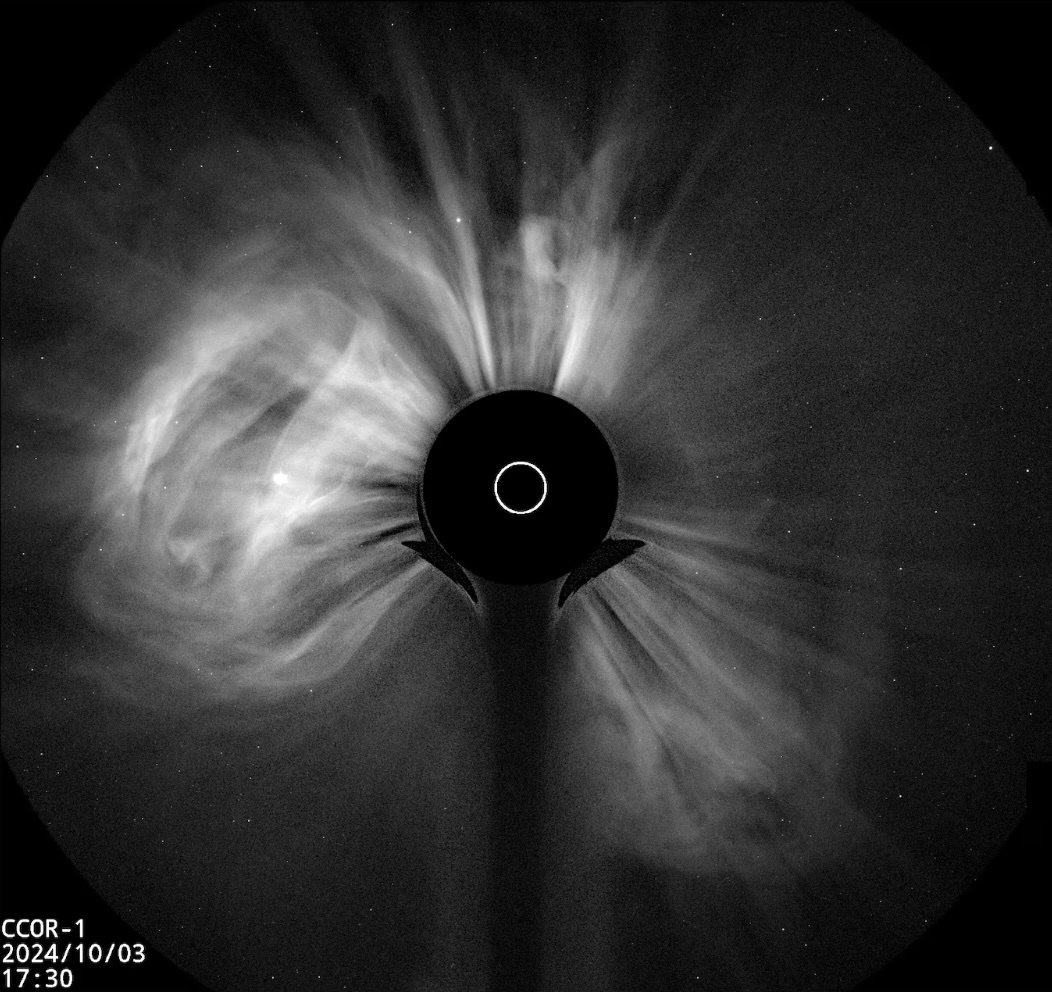25.10.2024

WASHINGTON – U.S. Naval Research Laboratory’s (NRL) Compact Coronagraph (CCOR) instrument has successfully collected its first images of coronal mass ejections (CMEs).
CCOR is a small space telescope designed to observe the Sun's atmosphere. On Sept. 19, the aperture door of CCOR was opened for the first time since it was launched on National Oceanic and Atmospheric Administration’s (NOAA) GOES-19 spacecraft on June 25 from NASA’s Kennedy Space Flight Center.
The full sunlight directly illuminated the inside of the instrument where a cylindrical device at the center of its field of view, called an occulter, blocks the Sun and creates an artificial eclipse – just like the moon would block the solar disk during an eclipse. As a result, the CCOR does not observe the Sun but only its outer atmosphere, called the solar corona, said Arnaud Thernisien, a research physicist from the NRL Advanced Sensor Technology Section within the Space Science Division.
On Oct. 3, the CCOR saw a perfect illustration of the Sun’s activity called a halo. Halos appear on coronagraph images as near-circular shapes, approximately concentric with the Sun’s center. The observed halo CME resulted in some effects seen on Earth a few days later including a rare glimpse of northern lights visible across the northern United States from Washington state to Maine. Northern lights, also called auroras, are the result of Earth’s magnetosphere disturbance with solar wind.
Over the next few weeks, the CCOR witnessed several CMEs including another halo on Oct. 10, resulting from an active region at the surface of the sun. “Halo CMEs are of particular interest for space weather as they are generally directed towards Earth,” Thernisien said.
“By creating an artificial eclipse, the CCOR allows scientists to study the Sun's corona, which can produce powerful solar storms that can disrupt Earth-based technologies,” said Thernisien. “The CCOR team is thrilled to see that the instrument is performing as expected.”
The instrument is used by NOAA's Space Weather Prediction Center (SWPC) and DOD to detect CMEs with low latency, providing critical early warnings of solar storms. CMEs can have severe consequences, including damage to satellites, disruptions to radio communications, and power grid failures.
NRL’s CCOR is the nation’s first operational coronagraph. Operational means that the instrument is tailored to provide low-latency observations of the corona and has some resilience to radiation-induced space weather effects.
CCOR is just the beginning of a series of operational coronagraphs that NRL is developing for NOAA. A second instrument, CCOR-2, is scheduled for launch in mid-2025. Additionally, NRL is working on a compact coronagraph for the European Space Agency's Vigil mission, which is scheduled for launch in 2031.
"The NRL team, in collaboration with the NOAA-NASA GOES Team, will continue testing the capabilities of CCOR-1 in space up until the end of January 2025 when it will be handed over to NOAA,” Thernisien said. “NRL would like to thank NOAA-NASA's Office of Space Weather Observations and the Office of Naval Research for their support.”
About the U.S. Naval Research Laboratory
NRL is a scientific and engineering command dedicated to research that drives innovative advances for the U.S. Navy and Marine Corps from the seafloor to space and in the information domain. NRL is located in Washington, D.C. with major field sites in Stennis Space Center, Mississippi; Key West, Florida; Monterey, California, and employs approximately 3,000 civilian scientists, engineers and support personnel.
For more information, contact NRL Corporate Communications at (202) 480-3746 or nrlpao@nrl.navy.mil. Please reference package number at top of press release.
Quelle: U.S. Naval Research Laboratory
